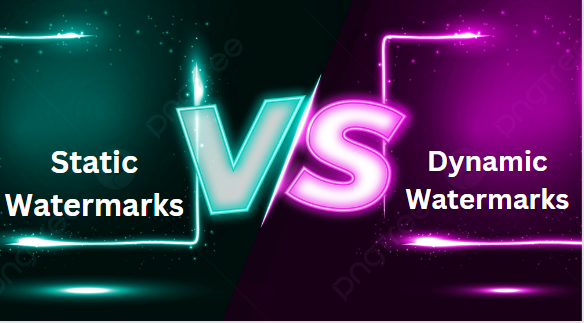Watermarking PDFs is one of the crucial tasks, that are performed mainly in organization. Moreover, static and dynamic watermarks are like secret stamps on digital files to protect them. Static ones stay the same, while dynamic ones change to fit different situations. Let’s explore what are the differences between static and dynamic watermarks and why they’re important for keeping our digital things safe.
Before starting with the comparisons of static vs dynamic watermarks, do you know the advantages of inserting watermark whether to add draft watermark to PDF or image?
What are the Advantages of Embed Watermarks in PDF?
In recent times, the risk of cyber threats has been enhanced, and most organizations are finding a way to overcome this issue. Hence, they found a way to i.e. add scanned signature to PDF or text as a watermark on online data to avoid any stealing, copying, editing, or printing problems. Curious to know about the same in detail, let’s understand in the context of the differences between static and dynamic watermarks:
- Watermarks show that a document belongs to you, making it clear that others can’t use it without your permission.
- You can include information like who made the document and when making it easier to keep track of changes or who’s using it.
- Watermarks remind users that a document might be confidential or important, encouraging them to treat it with care.
- They make your documents look more professional and official, which is important when sharing them with clients or partners.
- Watermarks can include codes that help you see where your document is being shared or if it’s being shared without permission.
- For users who use screen readers, watermarks can provide extra information about the document’s content.
Explaining: Differences Between Static and Dynamic Watermarks
A static watermark is a fixed identifying mark added to digital content, like images or documents, to signify ownership or copyright. Unlike dynamic watermarks, which can move, static watermarks remain stationary within the content. They offer basic protection against unauthorized use, they make not easier to remove watermark from locked PDF or unlocked files.
Email and social media make sharing content easy, but it also increases the risk of confidential information being exposed or stolen. Dynamic watermarking addresses this by overlaying customizable text or images on content, which can vary based on factors like date or viewer details. This helps protect content and trace leaks effectively.
Comparison Between Static VS Dynamic Watermarks
Now, let’s have a quick look at the differences between static and dynamic watermarks:
Static Watermarks:
- Fixed identifiers embedded within digital content.
- Remain unchanged once applied.
- Typically comprise static images, text, or patterns.
- Relatively easy to implement.
- Limited adaptability and variability over time.
- Serve as basic barriers against unauthorized usage.
- Susceptible to removal or manipulation.
- Offer basic security measures in less demanding security environments.
Dynamic Watermarks:
- Adaptable identifiers are dynamically generated based on contextual factors.
- Encode variable information such as user identity, time, or access parameters.
- Offer robust security and traceability.
- Each viewing instance or user interaction receives a unique identifier.
- Enhanced prevention against illegal distribution or unauthorized usage.
- Greater strength against tampering or removal attempts.
- Generated dynamically, lacking fixed, easily identifiable patterns.
- Provide advanced protection suitable for strict security requirements.
Now, Let’s Talk About How to Add Watermarks in PDFs
Adding a watermark is not a complex task, and using efficient solutions can make your task flawless. However, if you need to do the watermarking procedure manually, there is only one solution that can help i.e. Adobe Acrobat Pro. Remember, you can use this expensive utility only when if you have a subscription to this, and it is mandatory to be familiar with this. So, that you can easily understand its complicated GUI.
Therefore, those users who want to make the procedure hassle-free can opt PDF Watermark Creator Tool. This is a self-sufficient solution, and after downloading this you don’t need to download even Adobe Acrobat Tool. With the smart utility, you can insert a watermark as per your desire in different formats like text, image, and date & time.
So, without any further ado, just go to the official website of this software, click on the download option, and gain the benefit of the free demo version. After completing the free trial, if you find this utility is reliable, then you can try its fully-featured version, which is quite affordable than Adobe Acrobat Pro.
Bottom lines
Within this guide, we learned about the differences between static and dynamic watermarks in detail. Plus, we understood about the benefits of inserting watermarks in PDFs. Also, we explore one efficient technique to add a special mark within the online documents simultaneously. I hope after reading this whole guide, you won’t need to go somewhere else to gain the knowledge of static vs dynamic watermarks, since in this you have it all.
